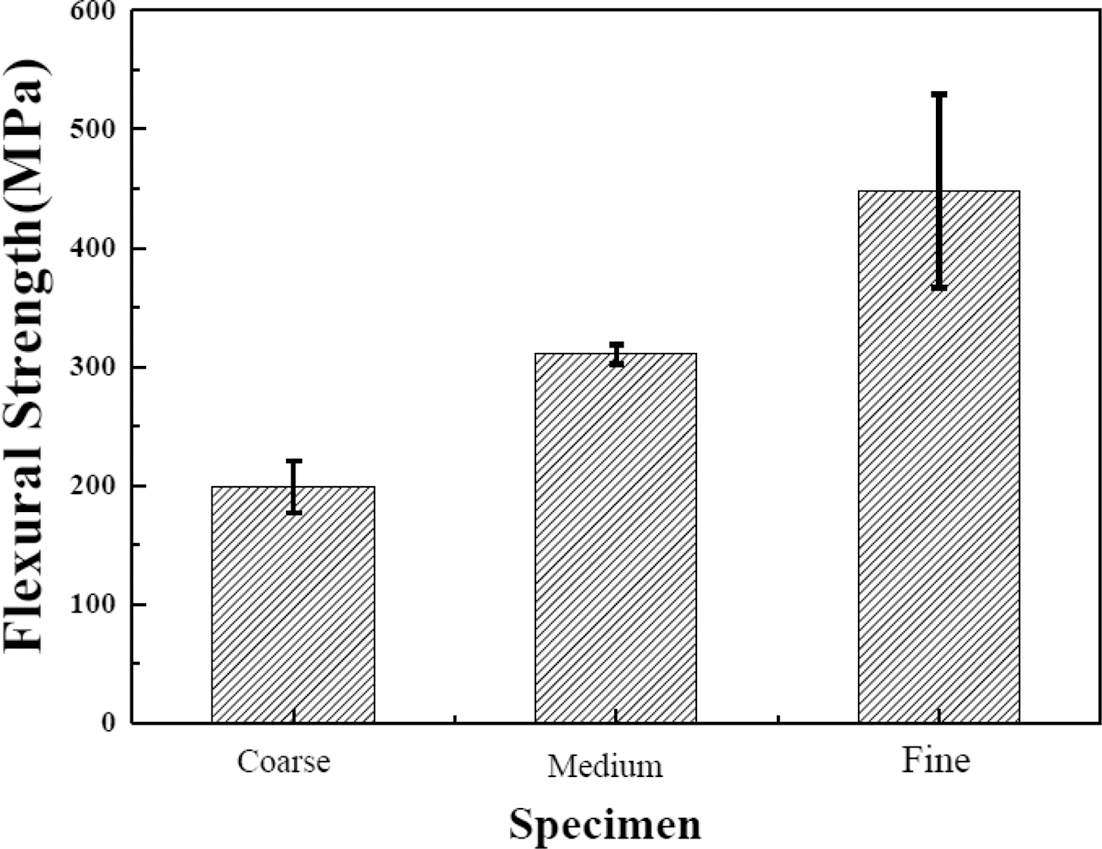Search
- Page Path
- HOME > Search
- [Korean]
- Thermal Properties and Microstructural Changes of Fe-Co System Valve Seat Alloy by High Densification Process
- In-Shup Ahn, Dong-Kyu Park, Kwang-Bok Ahn, Seoung-Mok Shin
- J Korean Powder Metall Inst. 2019;26(2):112-118. Published online April 1, 2019
- DOI: https://doi.org/10.4150/KPMI.2019.26.2.112

- 736 View
- 6 Download
-
 Abstract
Abstract
 PDF
PDF Infiltration is a popular technique used to produce valve seat rings and guides to create dense parts. In order to develop valve seat material with a good thermal conductivity and thermal expansion coefficient, Cu-infiltrated properties of sintered Fe-Co-M(M=Mo,Cr) alloy systems are studied. It is shown that the copper network that forms inside the steel alloy skeleton during infiltration enhances the thermal conductivity and thermal expansion coefficient of the steel alloy composite. The hard phase of the CoMoCr and the network precipitated FeCrC phase are distributed homogeneously as the infiltrated Cu phase increases. The increase in hardness of the alloy composite due to the increase of the Co, Ni, Cr, and Cu contents in Fe matrix by the infiltrated Cu amount increases. Using infiltration, the thermal conductivity and thermal expansion coefficient were increased to 29.5 W/mK and 15.9 um/m°C, respectively, for tempered alloy composite.
- [Korean]
- Effect of the SiC Size on the Thermal and Mechanical Properties of Reaction-bonded Silicon Carbide Ceramics
- Chang-Sup Kwon, Yoon-Suk Oh, Sung-Min Lee, Yoonsoo Han, Hyun-Ick Shin, Youngseok Kim, Seongwon Kim
- J Korean Powder Metall Inst. 2014;21(6):467-472. Published online December 1, 2014
- DOI: https://doi.org/10.4150/KPMI.2014.21.6.467

- 1,027 View
- 12 Download
- 3 Citations
-
 Abstract
Abstract
 PDF
PDF RBSC (reaction-bonded silicon carbide) represents a family of composite ceramics processed by infiltrating with molten silicon into a skeleton of SiC particles and carbon in order to fabricate a fully dense body of silicon carbide. RBSC has been commercially used and widely studied for many years, because of its advantages, such as relatively low temperature for fabrication and easier to form components with near-net-shape and high relative density, compared with other sintering methods. In this study, RBSC was fabricated with different size of SiC in the raw material. Microstructure, thermal and mechanical properties were characterized with the reaction-sintered samples in order to examine the effect of SiC size on the thermal and mechanical properties of RBSC ceramics. Especially, phase volume fraction of each component phase, such as Si, SiC, and C, was evaluated by using an image analyzer. The relationship between microstructures and physical properties was also discussed.
-
Citations
Citations to this article as recorded by- Structural and Mechanical Properties of SiC-Rich By-Products of the Metal Grade Si Process
Thomas Hafner, Jonas Hafner, Frank Kimm, Vira Bovda, Oleksandr Bovda, Oleksandr Kuprin, Anatoliy Pikalov, Kostiantyn Lentsov, Pavlo Schikhaylo, Yriy Onyschuk, Andriy Tarasuk, Viktoriya Podhurska, Bogdan Vasyliv, Oleksandr Shcheretsky, Ihor Vorona, Roman Y
Materials Science Forum.2024; 1113: 87. CrossRef - Effect of Y2O3 Additive Amount on Densification of Reaction Bonded Silicon Carbides Prepared by Si Melt Infiltration into All Carbon Preform
Kyeong-Sik Cho, Min-Ho Jang
Korean Journal of Materials Research.2021; 31(5): 301. CrossRef - Mechanical Strength Values of Reaction-Bonded-Silicon-Carbide Tubes with Different Sample Size
Seongwon Kim, Soyul Lee, Yoon-Suk Oh, Sung-Min Lee, Yoonsoo Han, Hyun-Ick Shin, Youngseok Kim
Journal of Korean Powder Metallurgy Institute.2017; 24(6): 450. CrossRef
- Structural and Mechanical Properties of SiC-Rich By-Products of the Metal Grade Si Process
TOP
 KPMI
KPMI


 First
First Prev
Prev


